If you have curly hair, you know that it can be a bit of a challenge to care for. Curly hair is more prone to drying out and becoming frizzy, and it can be difficult to find products that work well.
There are several ways to care for curly hair. What works best may vary depending on the individual.
In this blog post, we will discuss the best ways to take care of your curly hair.
What Leads to Curly Hair?

Curly hair describes textured hair with an S-shaped curl pattern rather than a straight or wavy growth pattern. The natural shape of curl patterns means that it tends to be drier than straight hair.
This occurs because while the cuticles on straight hair lie flat and trap moisture within the hair strand, the shape of curly hair prevents it from holding onto water as effectively.
Ultimately, there is no single cause for curly hair. The result of curly hair is many different factors and traits coming together in unique ways.
One of the most important is genetics, as specific genes are responsible for determining the shape and texture of your hair follicles.
Depending on how their hair reacts to internal and external conditions, some people have more wavy strands. Environmental factors and health conditions can impact hair growth, resulting in outwardly curling strands or tighter, kinkier curls.
Certain chemicals, such as those in heat styling products, can also change the texture of hair by damaging its delicate protein structure.
Lifestyle habits, such as heavy sun exposure or repetitive use of flat irons and blow dryers, can contribute to frizzy locks. Friz is a problem for curly hair. Air dry your curly locks to avoid these issues.
Whether your curls are tight or loose, there are many ways to care for and style this beautiful feature. With the right products and techniques, you can keep your curls looking healthy and vibrant no matter what the weather has in store.
The Curly Hair Population
According to TextureTrends Report by NaturallyCurly.com, approximately 65%-70% of people in the US have curly hair. This number is likely even higher among specific populations, such as those of African and Caribbean descent.
While some may view their curls as a burden or inconvenience, others embrace them as a source of pride and beauty. No matter one’s perspective, recognize the prevalence and the cultural significance of this beautiful natural feature.
How To Take Care of Curly Hair: Tips and Best Practices
There are many things that you can do for curly hair care.
#1. Pre Wash Care
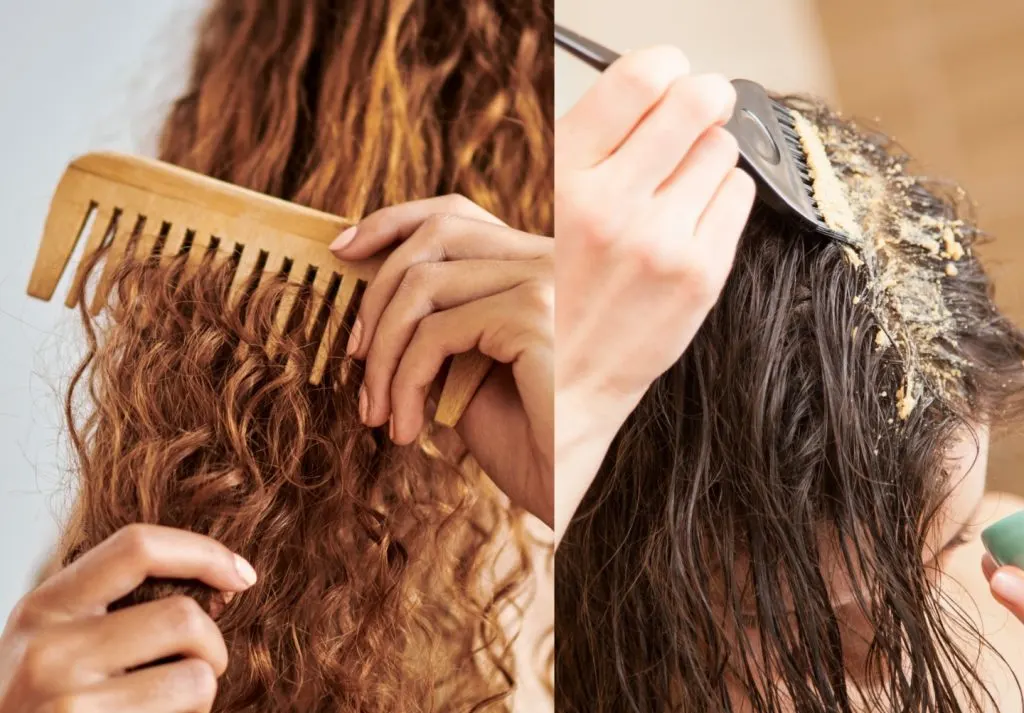
If you struggle with tangled hair or your hair is usually pretty dry, pre-washing your hair will help.
Pre-washing refers to adding a leave-in conditioner or doing a mask before washing your hair with shampoo and conditioner. Contrary to what we might think, there is such a thing as too clean! A pre-wash protects hair as it’s washed and helps with detangling.
To pre-wash your hair, follow these guidelines:
-Choose your product
- penetrating oil such as coconut, grape seed, or argan oil
- hair mask (stays on hair for 15-20 minutes before shampooing)
- deep conditioner (leave on 3-5 minutes before shampooing)
-Section your hair into at least four sections, more if you have really thick hair. Apply the product to your hair from close to the roots down to the ends. Be sure the ends are completely saturated in your product. If you’re using an oil, avoid using it too close to your scalp.
-Use your fingers or a wide-toothed comb to detangle hair.
-Rinse your hair thoroughly and follow up with your regular shampoo and conditioner.
#2. Use Cold Water
If you’re used to washing your hair with warm water, you’ll be surprised to hear that cold water is actually better for curly hair. Cold water fights frizz and seals in moisture, which is important for curls to maintain their shape and shine.
Cold water is also less irritating to the scalp and has been shown to improve scalp circulation. It’s best to rinse with cold water after you use your conditioner to make sure it’s sealed in.
#3. Wash Your Hair Weekly
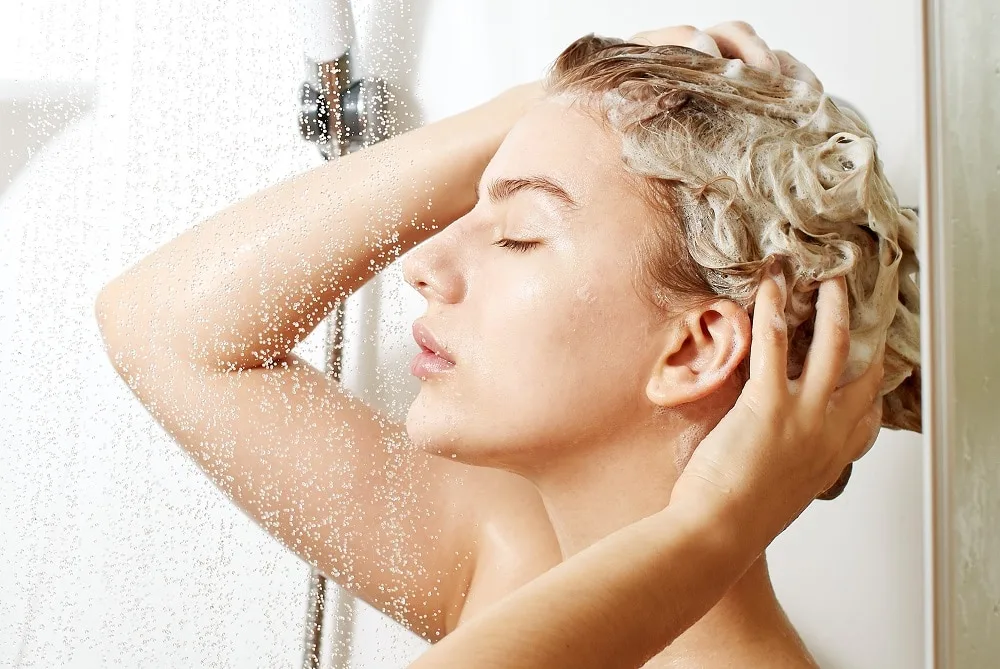
Washing curly hair is an essential part of maintaining healthy, vibrant curls. Not only does regular washing help to keep the scalp healthy and free from bacteria and excess oils, but it can also help to prevent frizzy, unmanageable curls.
First and foremost, washing is significantly less drying for curly hair than letting oil and dirt build-up for days. Not washing your hair tends to create a buildup of residue that can lead to increased breakage and damage over time. Not washing your hair in excess (i.e., more frequently than once a week), however, is essential for keeping it healthy.
In addition, using gel or products on damp hair can help lock in moisture while you style, ensuring that your curls look their best no matter the weather or occasion.
#4. Use the Right Shampoo
When shampooing curly hair, consider a few key factors to prevent dry hair. Certain ingredients in shampoos can cause more damage to curls and make them brittle by disrupting your natural oils.
For example, sulfates are a common additive in shampoos that are known to be especially damaging for curly locks. These detergent-based chemicals can strip the hair of its natural oils and leave it feeling dry and unmanageable.
Therefore, it is best to look for shampoos made with natural extracts and other gentler ingredients, such as aloe vera and coconut oil.
#5. Be Generous with Conditioner
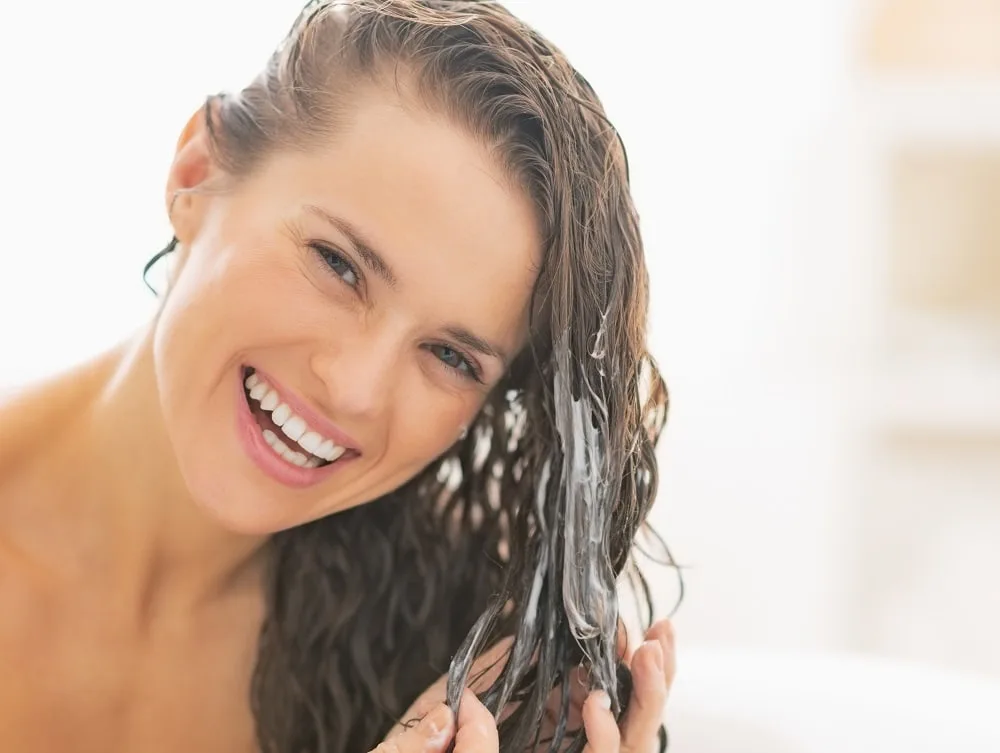
One key factor is to ensure your hair is well hydrated, keeping it soft, pliable, and healthy. Accomplish this through regular deep conditioning treatments.
Conditioner is crucial for curls to remain sleek and smooth, preventing them from becoming dry, brittle, or frizzy. In addition, a generous application of conditioner on wet hair helps to coat each strand with essential moisture and nutrients.
Moisturized hair makes it easier to maintain its curl shape while preventing damage from environmental factors and styling tools.
If you have curly hair, you know just how important it is to maintain a healthy scalp. Conditioner is essential, as it helps replenish the scalps’ natural oils and adds vital nutrients crucial for optimal hair health.
Additionally, conditioner helps to detangle your curls and minimize frizz, making the styling more effective. Furthermore, this practice helps to prevent split ends and breakage by protecting your delicate hair shafts from damage caused by brushing or heat styling tools.
#6. Drying Curly Hair
If there’s anything curly-haired women want to prevent, it’s frizz. One of the best ways to do that is by using a microfiber towel to dry your hair.
“Blot” it on your hair to let it soak up all the extra water, then let your hair air dry as much as possible before applying your styling products.
#7. Scrunching
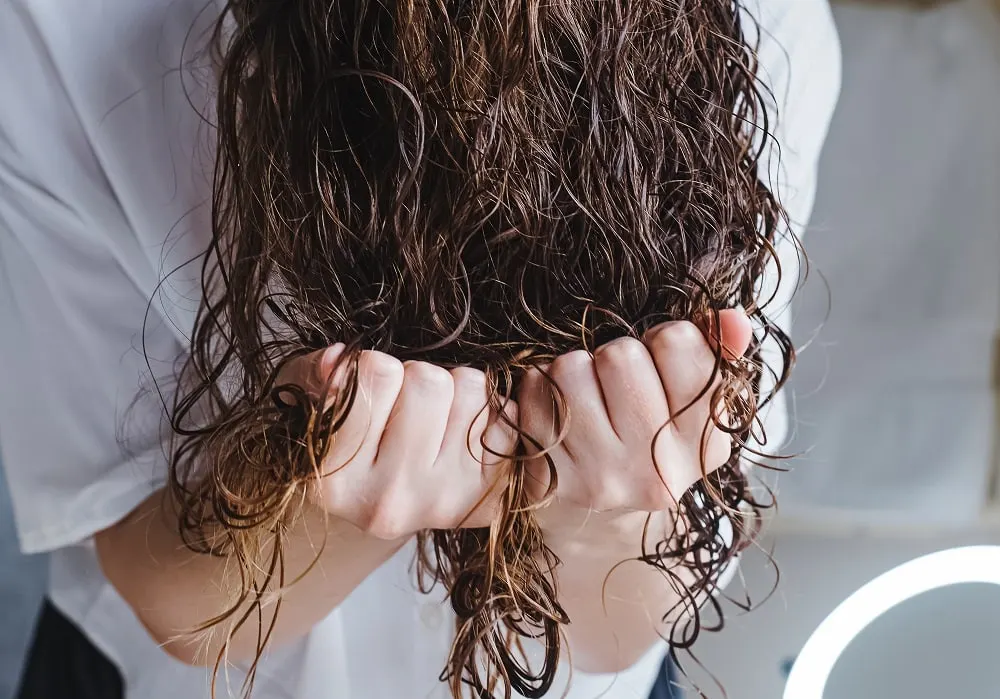
Scrunching is a method you can use to give your curls definition. It works best for women with wavy to curly hair, not hair that is already tightly curled.
Using a hair oil or leave-in conditioner when your hair is wet or pretty damp, cup your hands over small sections of your hair and gently squeeze up toward your roots. You can also do this
with a microfiber towel or a diffuser. Repeat until you’ve scrunched all of your hair and let it air dry. Do touch-ups as needed.
#8. Avoid Excessive Heat
Excessive heat can harm curly hair, causing everything from dryness and breakage to frizz and damage to the hair cuticle. Use products that help alleviate heat and techniques that reduce heat exposure to protect your curls from excessive heat damage.
There are several ways to protect your hair from excessive heat. Use a heat protectant spray when using hot tools like a diffuser or blow dryer, taking care not to use settings that are too hot for your hair type. Avoid letting your hair get too wet before using hot tools.
Never use harsh products that contain alcohol or drying ingredients, such as sulfates and silicones. These chemicals can cause damage and frizziness, further exacerbating the problem of curly hair.
You can maintain beautiful and healthy curls even in high temperatures by being mindful of these simple tips and products.
#9. Don’t Brush Curly Hair
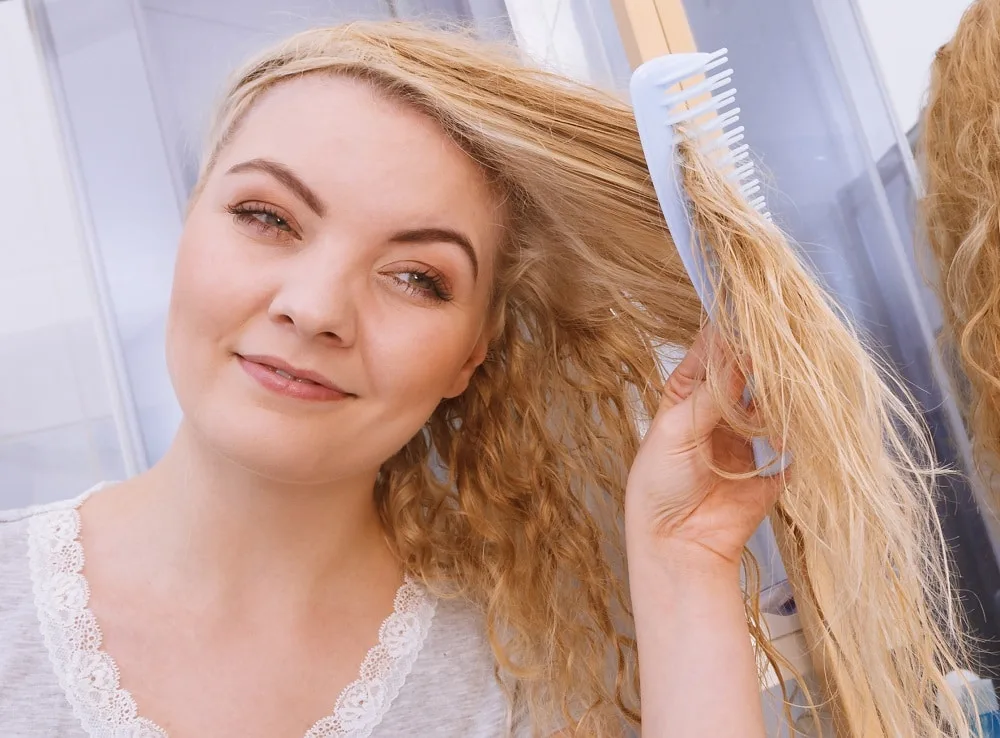
Negative effects occur when you brush curly hair because brushing can lead to tangling and breakage, particularly when done excessively or with rough bristles.
Furthermore, frequent brush strokes can cause friction and damage the delicate outer layer of the hair shaft, resulting in dehydrated curls.
While brushing is not necessarily harmful in all cases, there are alternative methods for maintaining naturally curly hair. For example, instead of using a brush, you might try combing through wet or dampened locks using a wide tooth comb.
Additionally, natural detanglers such as tea tree oil can manage stubborn tresses without causing excess damage. Ultimately, for best results when caring for curly hair, be mindful of your preferred styling techniques and choose products accordingly.
#10. Use Styling Products Suitable for Your Hair Type
To choose the right styling products for your hair type and texture, you’ll need to do some research. This is important for two main reasons.
First, by learning about different hair types and how certain products work on them, you can make informed decisions about what to use and when.
Second, investing time in researching different products will help you avoid wasting money on products that may not give you the results you’re looking for.
One tool that can be particularly useful when styling your hair is a diffuser attachment for your blow dryer. A diffuser helps to direct airflow over smaller sections of hair at a time, which is ideal when trying to style or tame frizzy or unruly locks.
Another useful tool is a curling wand, which can be used to create tight curls or loose waves, depending on your preferences. Additionally, various products like mousses and gels can help to define and add texture to your curls, making them flatter and sleeker.
Whether you have fine or coarse hair, choosing the right styling tools based on your specific needs will help you achieve your desired look with ease.
So do your research and invest in the best products for your unique hair type and texture!
#11. Practice Overnight Hair Care

Several methods can be used to protect and maintain curly hair while sleeping. Perhaps the most well-known sleep routine technique is pineappling.
Pineappling is where you gently gather your curls on top of your head and use a scrunchie, hair tie, or even a loose bandana to hold them in place. This helps minimize friction between your hair and the pillowcase, as it keeps the hair off your face and shoulders.
Another factor for maintaining healthy curls is choosing an appropriate pillowcase. Silky or satin pillowcases are often recommended because they create less friction against the hair than other materials, such as cotton.
Additionally, some people find that sleeping with their natural Afro facing down (rather than sideways) can help to reduce frizz and tangles by decreasing direct contact with the pillowcase.
Finally, using a gentle leave-in conditioner before going to bed can help keep your curls hydrated throughout the night, which in turn will help minimize breakage caused by friction from movement in your sleep.
#12. Oiling Curls
Since curly hair doesn’t hold as much moisture as straight hair, using hair oil regularly will go a long way in making curls healthy and pretty.
A little goes a long way. Start with a pea-sized amount on wet or damp hair to see how your hair reacts, then add more in small amounts. When you’re done, use a diffuser or let your hair air dry.
Avoid These Common Mistakes When Taking Care of Curly Hair
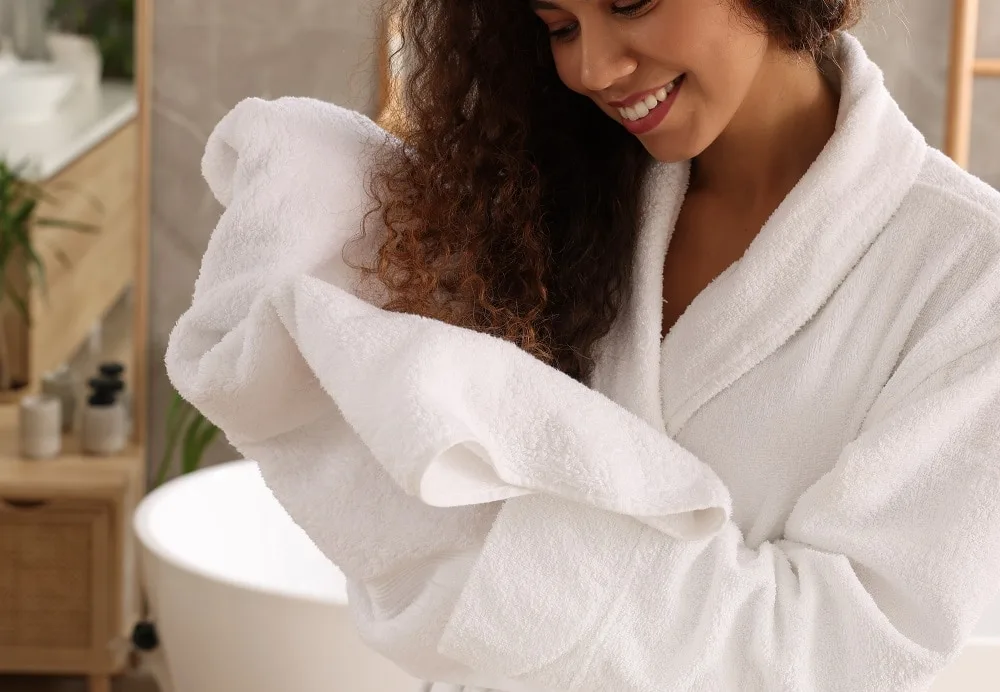
- Overwashing – your hair needs a certain amount of oil to be healthy, so avoid washing every day.
- Using the wrong towel type – to dry your hair, use a microfiber towel, a cotton t-shirt, or air dry
- Picking the wrong products – do your own research to see which hair products will give you the results you want.
- Skipping conditioner – curly hair needs hydration to be healthy, shiny, and frizz-free.
- Detangling with a brush – use your fingers or a wide-toothed comb.
What is a Good Hair Care Routine for Curls?
Shampoo 2-3 days a week, using conditioner after every wash. Dry hair with a microfiber towel, soft t-shirt, or air dry hair. If you’re going to wear your hair curly, scrunch the hair with curly hair oil or leave-in conditioner and let it air-dry. If using hot tools to style, first put in a heat protectant.
As a little treat to your hair, once per month use a hair mask.
Conclusion
Taking good care of your curly hair is necessary. Curly hair is often considered high-maintenance, but it doesn’t have to be with a good curly hair care routine.
With the right products and techniques, you can achieve healthy, beautiful curls that are easy to manage. Wash your hair frequently, find a moisturizing hair mask, use products suitable for your hair type, and practice overnight hair care to maintain bouncy natural curls while you sleep.
Those with curly hair should experiment to find what works best for their hair type. To keep your curls looking their best and prevent damage, investing in quality products specifically formulated for curlier types is key.
We hope these tips will help you achieve the best possible look for your curly head of hair!
FAQs
The typical time frame to give your curly hair trim is every 6-8 weeks. Regular trims will help with detangling and promote hair growth.
If you want movement, a layered haircut is a good option. Avoid going too short to see your curls in their best shape.
This depends on how oily your hair gets, but typically 2-3 times per week is enough for curly hair.
Use a microfiber towel or air dry. If you must use a blow-dryer, be sure to apply a heat protectant beforehand.
Using a leave-in conditioner and not rubbing your hair with a towel to dry it will both go a long way toward reducing and preventing frizzy hair.
Garnier Fructis Curl Nourish Shampoo, L’Oreal Paris Evercurl HydraCharge, Moroccanoil Curl Enhancing Shampoo and Aveda Be Curly Conditioner, Maui Moisture Coconut Oil Conditioner, SheaMoisture Curl and Shine Conditioner.
You May Also Like
